Thingiverse
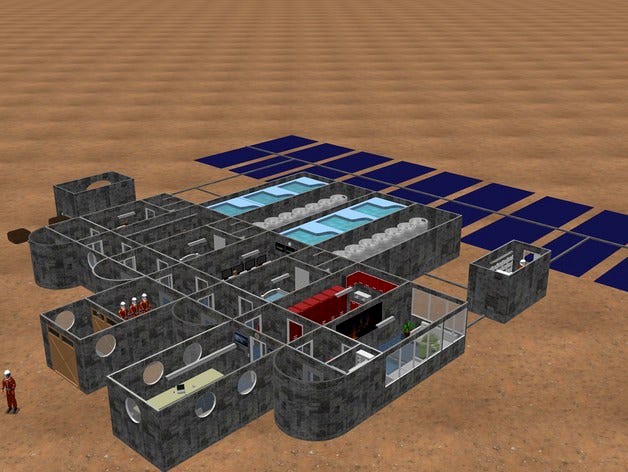
Mars Base by CyberIllusion
by Thingiverse
Last crawled date: 2 years, 12 months ago
This represents the plans for a longterm Mars base to support 6 people.
Assembly
The construction of this base will require 15 to 18 launches of heavy lift rocket supporting a payload fairing of 10 meters high by 4 meters wide. The rocket will also need to be able to support up to 8000 kilograms of payload to Mars. The base will be composed of several robotic mobile modules. Once all of them have been delivered to Mars, they will begin pairing up and constructing themselves according to a predetermined layout. Each module will use an interlocking docking mechanism to connect to the other modules. The docking connector will also act as a distribution mechanism for networked resource tubing(NRT) such as water, waste,electricity, O2 and CO2. The walls of each module generally consist of 8cm thick titanium carbon nanotubes with exception of NRT's which account for over half of the overall thickness in some areas.
Living Conditions
Two astronauts will be assigned to share a room module. Each room module will consist of a bunk bed, lavatory and shower. The astronauts will also share a small closet for storing clothing and other personal things. Adjacent to each room will be an emergancy evacuation closet. This closet will be pressurized and provides two space suits and weeks worth of rations. In the event of a hull breech astronauts will be able to quickly get suited up and assess any potential problems without having to go to the air lock.
Command
The command module will consist of 3 large wall displays showing statistics about the base and 8 computer units for checking more detailed stats and for doing diagnostics.
Lounge
The lounge module will be a place for taking a break and socializing. It will also have a television that shows latest information and entertainment from earth.
Food
The kitchen module will house 12 industrial strength refrigeration units capable of storing up to 1000 individual frozen meal packets. There will also be an additional 1000 MRE meals for emergency use. The hydroponics module will be used to grow genetically modified fruits and vegetables using high grade artificial grow lights.
Air and Water
The base will be filled with a nitrogen/oxygen atmosphere. CO2 will be sent to Hydroponics and O2 will be replenished using the plants or from the electrolysis module. Two water modules will be sent holding 50,000 gallons of water. Each module will have a waste container and water recycle unit. If the base is situated near the poles then robotic gatherers with on-board lasers can obtain ice chunks and return them to base for recycling also. Excess water can further be broken down into Oxygen (air) and Hydrogen (fuel cells) using the electrolysis module.
Sandstorms and Radiation
In addition to thick titanium plating used in the base there will also be a large scale 3D printer sent to Mars, whose sole purpose is to create 3D blocks from Mars soil. This factory will consist of a conveyor belt and 2 robotic helpers. Their purpose will be to encapsulate the entire base with 1 meter thick bricks created from martian soil, to protect against radiation and sand storms. An added benefit of the factory is that it also produces water from the soil during the brick making process, which can be sent to the water recyclers.
Transportation
Five two-passenger vehicles will be provided for exploration. These vehicles will be battery powered with a maximum range of 400 km and a total speed of 50km/h. The range can be greatly extended if a deployable solar panel or RTG charging unit is brought along.
Power
The main source of power during the day will come from 10 solar panels with a total area of 40 square meters each (400 square meters total). During low light scenarios (night time, sandstorm) power will be provided by several large scale radioisotope thermoelectric generators (RTGs) and hydrogen powered fuel cells. For safety and ease of service a power module will be sent to house the RTG, fuel cells and transformers.
Small robotic vacuum cleaners (similar to the ones on earth) will be used to clean the solar panels daily.
Assembly
The construction of this base will require 15 to 18 launches of heavy lift rocket supporting a payload fairing of 10 meters high by 4 meters wide. The rocket will also need to be able to support up to 8000 kilograms of payload to Mars. The base will be composed of several robotic mobile modules. Once all of them have been delivered to Mars, they will begin pairing up and constructing themselves according to a predetermined layout. Each module will use an interlocking docking mechanism to connect to the other modules. The docking connector will also act as a distribution mechanism for networked resource tubing(NRT) such as water, waste,electricity, O2 and CO2. The walls of each module generally consist of 8cm thick titanium carbon nanotubes with exception of NRT's which account for over half of the overall thickness in some areas.
Living Conditions
Two astronauts will be assigned to share a room module. Each room module will consist of a bunk bed, lavatory and shower. The astronauts will also share a small closet for storing clothing and other personal things. Adjacent to each room will be an emergancy evacuation closet. This closet will be pressurized and provides two space suits and weeks worth of rations. In the event of a hull breech astronauts will be able to quickly get suited up and assess any potential problems without having to go to the air lock.
Command
The command module will consist of 3 large wall displays showing statistics about the base and 8 computer units for checking more detailed stats and for doing diagnostics.
Lounge
The lounge module will be a place for taking a break and socializing. It will also have a television that shows latest information and entertainment from earth.
Food
The kitchen module will house 12 industrial strength refrigeration units capable of storing up to 1000 individual frozen meal packets. There will also be an additional 1000 MRE meals for emergency use. The hydroponics module will be used to grow genetically modified fruits and vegetables using high grade artificial grow lights.
Air and Water
The base will be filled with a nitrogen/oxygen atmosphere. CO2 will be sent to Hydroponics and O2 will be replenished using the plants or from the electrolysis module. Two water modules will be sent holding 50,000 gallons of water. Each module will have a waste container and water recycle unit. If the base is situated near the poles then robotic gatherers with on-board lasers can obtain ice chunks and return them to base for recycling also. Excess water can further be broken down into Oxygen (air) and Hydrogen (fuel cells) using the electrolysis module.
Sandstorms and Radiation
In addition to thick titanium plating used in the base there will also be a large scale 3D printer sent to Mars, whose sole purpose is to create 3D blocks from Mars soil. This factory will consist of a conveyor belt and 2 robotic helpers. Their purpose will be to encapsulate the entire base with 1 meter thick bricks created from martian soil, to protect against radiation and sand storms. An added benefit of the factory is that it also produces water from the soil during the brick making process, which can be sent to the water recyclers.
Transportation
Five two-passenger vehicles will be provided for exploration. These vehicles will be battery powered with a maximum range of 400 km and a total speed of 50km/h. The range can be greatly extended if a deployable solar panel or RTG charging unit is brought along.
Power
The main source of power during the day will come from 10 solar panels with a total area of 40 square meters each (400 square meters total). During low light scenarios (night time, sandstorm) power will be provided by several large scale radioisotope thermoelectric generators (RTGs) and hydrogen powered fuel cells. For safety and ease of service a power module will be sent to house the RTG, fuel cells and transformers.
Small robotic vacuum cleaners (similar to the ones on earth) will be used to clean the solar panels daily.
Similar models
3dwarehouse
free

HHO gas Electrolysis multi-celluar free flow cavity cell for ocean water
...flow through a single outlet once sealed. this is scaled for powerplant quantities of fuel, using ocean water as the electrolite.
thingiverse
free

Modular Mars Base by oosime
...t way would be to essentially engulf the base with martian soil to protect each of the modules from harmful galactic cosmic rays.
grabcad
free

Exercise Bike Fueled Electrolysis to Refuel Small Fuel Cells
...ed electrolysis to refuel small fuel cells
grabcad
exercise bike fuels a generator, which provides electricity for electrolysis.
3dwarehouse
free

HHO fuel cell that was submitted for patent
...is cell #browns_gas #dallasgoldbug #ed_chiarini #hho #hydrogen #oxy_hydrogen_torch #oxygen #stainless_steel_cups #water_fuel_cell
grabcad
free

Dual output Water electrolysis Dry Cell
...dual output water electrolysis dry cell
grabcad
an electrolysis dry cell with separate hydrogen and oxygen outputs.
cg_trader
$17

Robot Mars
...equipped with two atomic batteries, which provide work for many years. robot mars can operate in high temperature ranges. explore
thingiverse
free

pascee's Mars base by skelman8
...s beneath the crust. the space ship will have retractable solar panels for in-space flight and a liquid fuel booster for takeoff.
thingiverse
free
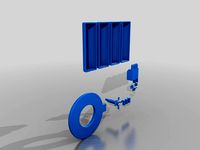
Nuclear Mars Base by Lepidopteranodon
...ng transported materials. the plants themselves are grown using growlights, also powered by electricity from the central reactor.
grabcad
free

Radioisotope Thermoelectric Generator (RTG)
...with a measuring tape and start getting dimensions on one of there nuclear power systems.
created in autodesk inventor 2018 lt.
thingiverse
free

First Mars Colony by aprzy15
...aut food.
got your traditional lounge. nice couch to rest on after a long day at work.
basic kitchen with living necessities.
Mars
3d_ocean
$10

Mars
...tar stars system universal way world
this is the mars with atmosphere. the textures file including 4 maps. thank you for looking.
turbosquid
$2

MARS
...
turbosquid
royalty free 3d model mars for download as blend on turbosquid: 3d models for games, architecture, videos. (1170651)
3ddd
free

ClassiCon Mars
...classicon mars
3ddd
classicon , mars
стул mars от classicon.
3ds max 2011 + fbx. vray.
turbosquid
$1

the mars
...oyalty free 3d model the mars for download as blend and blend on turbosquid: 3d models for games, architecture, videos. (1704346)
turbosquid
free

mars
...squid
royalty free 3d model mars for download as max and obj on turbosquid: 3d models for games, architecture, videos. (1355198)
3d_export
free

mars landscape
...mars landscape
3dexport
mars landscape made with word machine.
turbosquid
$400

Mars
... available on turbo squid, the world's leading provider of digital 3d models for visualization, films, television, and games.
turbosquid
$40

Mars
... available on turbo squid, the world's leading provider of digital 3d models for visualization, films, television, and games.
turbosquid
$39

Mars
... available on turbo squid, the world's leading provider of digital 3d models for visualization, films, television, and games.
turbosquid
$25

Mars
... available on turbo squid, the world's leading provider of digital 3d models for visualization, films, television, and games.
Base
archibase_planet
free
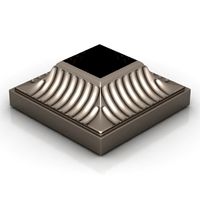
Base
...base
archibase planet
base column column base
base 1 - 3d model (*.gsm+*.3ds) for interior 3d visualization.
archibase_planet
free

Base
...base
archibase planet
base column base column
base 5 - 3d model (*.gsm+*.3ds) for interior 3d visualization.
archibase_planet
free
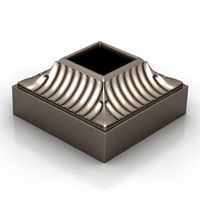
Base
...base
archibase planet
base column column base
base 7 - 3d model (*.gsm+*.3ds) for interior 3d visualization.
archibase_planet
free
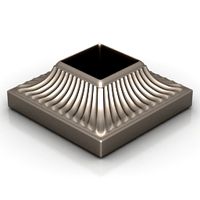
Base
...base
archibase planet
base column column base
base 2 - 3d model (*.gsm+*.3ds) for interior 3d visualization.
archibase_planet
free

Base
...base
archibase planet
base column column base
base 3 - 3d model (*.gsm+*.3ds) for interior 3d visualization.
archibase_planet
free
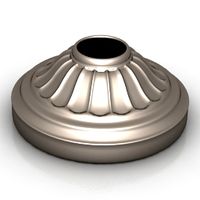
Base
...base
archibase planet
base column column base
base 4 - 3d model (*.gsm+*.3ds) for interior 3d visualization.
archibase_planet
free

Base
...base
archibase planet
base column base column
base 6 - 3d model (*.gsm+*.3ds) for interior 3d visualization.
archibase_planet
free
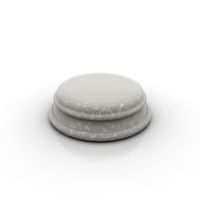
Base
...base
archibase planet
foundation base
column base ionic - 3d model (*.gsm+*.3ds) for interior 3d visualization.
archibase_planet
free
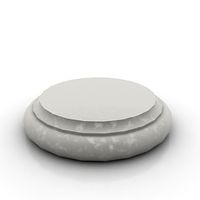
Base
...base
archibase planet
foundation base
column base tuscan - 3d model (*.gsm+*.3ds) for interior 3d visualization.
design_connected
$18

Base
...base
designconnected
tom dixon base computer generated 3d model. designed by dixon, tom.
